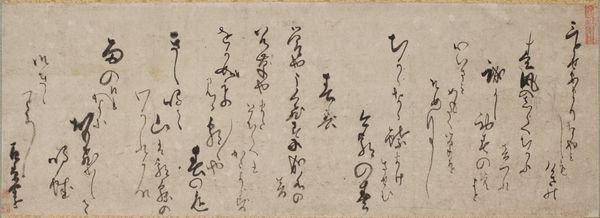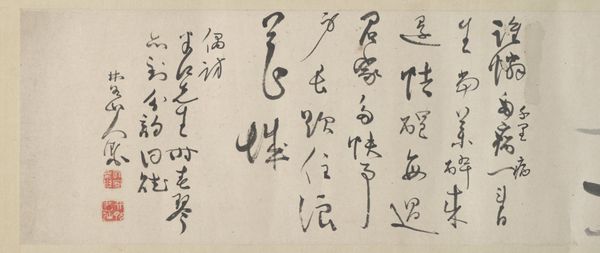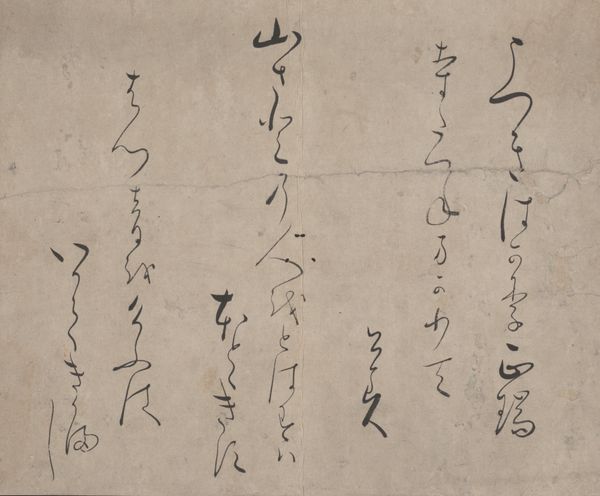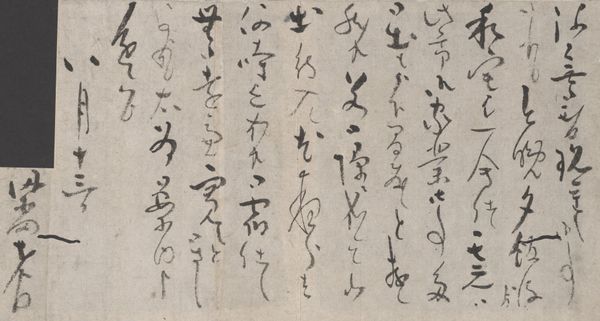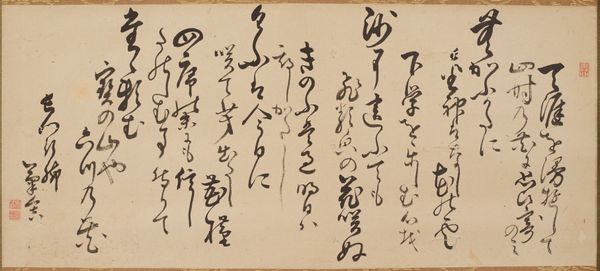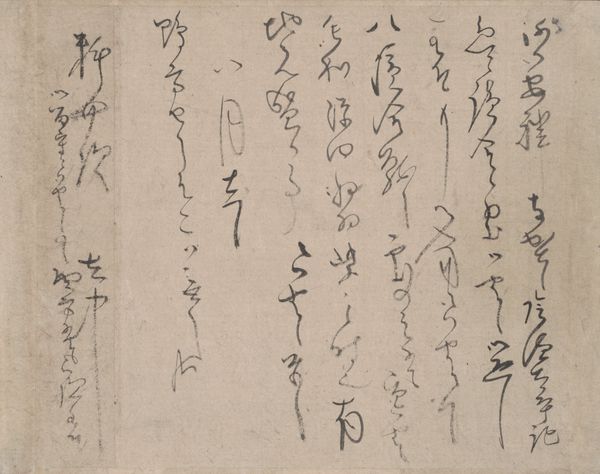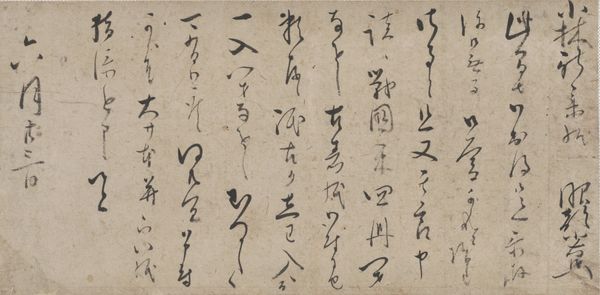
drawing, fibre-art, textile, paper, ink-on-paper, ink
#
drawing
#
fibre-art
#
asian-art
#
textile
#
paper
#
ink-on-paper
#
ink
#
calligraphy
Dimensions: 5 7/8 × 26 3/16 in. (14.92 × 66.52 cm) (sheet)7 3/16 × 26 9/16 in. (18.26 × 67.47 cm) (mount)
Copyright: Public Domain
Editor: This artwork, called "Letter," by Akiyama Gyokuzan, dates from around the mid-18th century. It's created with ink on paper, so the lines and forms look light and elegant, like a snapshot of daily correspondence frozen in time. What catches your eye when you look at it? Curator: As a historian, I'm intrigued by how this piece connects to the broader context of 18th-century communication and artistic practice in Japan. These handwritten letters, beyond their explicit content, served as tangible connections within a complex social fabric. How would this “snapshot” of communication you mentioned be received by its intended audience and how would the public view it then compared to now? Editor: That's interesting. It must have carried a different weight than an email today! So, are you saying the visual aesthetics of the calligraphy also conveyed specific meanings? Curator: Absolutely! Calligraphy wasn't just a method of conveying information; it was an art form deeply embedded in cultural values. The skill and style of the writing could signify the writer’s social standing, education, and personal refinement. Can you see how the very act of creating such a letter was a performance, a carefully constructed presentation of self within a hierarchical society? Editor: Yes, the control and finesse on display tells me it was made with care, by someone with training. Were letters like this typically displayed publicly, or were they meant to be more personal and private? Curator: While the content might have been personal, the aesthetic quality invites a public appreciation. Works of calligraphy were often collected and displayed, sometimes even remounted into hanging scrolls for鑑賞 (kanshō - appreciation). The value wasn't solely in the message, but in the artistry and cultural capital embodied by the piece. Perhaps a way to build legacy and project status in life, and after? Editor: I see. It makes me think differently about the art of letter writing. This glimpse into the past helped me see calligraphy not just as a written language, but a potent and public display of self. Curator: And considering the institutional space this artwork occupies today, it brings us to a contemporary appreciation for its beauty as an artifact, but also, to understand its cultural impact through the act of its very making.
Comments
No comments
Be the first to comment and join the conversation on the ultimate creative platform.

